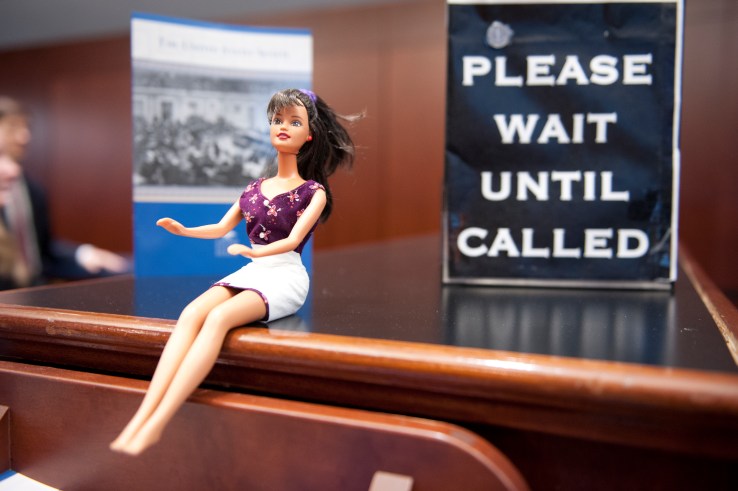

Yes, after pulling herself out of her 1950’s rut as a swimsuit model to become everything from a doctor, lawyer, computer scientist, astronaut and even the president of the United States, Barbie has now become a 3D-animated hologram that can serve up the weather on command.
As first reported in Wired, The Hello Barbie Hologram debuted at the New York Toy Fair this week. And like the original Hello Barbie doll, her laser-beamed character combines motion-capture animation with peppy, Amazon Echo-like answers to your child’s questions.
Need an alarm? Hello Barbie. Want a nightlight? Hello Barbie. Want to remind your child to brush their teeth? Hello Barbie Hologram does that, too. Just turn her on with the wake phrase “Hello Barbie” to get her to do your bidding.
In other words, the supposed symbol for girls who “can do anything” really can become anything, including a personified bot.
Isn’t that a bit…sexist? Some may balk at the suggestion a holographic female doll bot serving up answers is somehow creating a gender imbalance. After all, you may say, it’s just a doll combined with some cool technology. But, from what we know so far, there’s no hologram Ken version and robots and artificial intelligence programs are often designated as female, particularly if they fulfill a subservient role. Helping you mind your schedule and answering questions about the weather fall neatly into that category.
It also undermines Barbie as a real person. She’s a hologram assistant.
You’d think Mattel would be mindful here of how the latest version of Barbie may come across to impressionable young girls, given its many other missteps — including and especially in its foray into tech. We’ve written before about Barbie’s foibles as a hilariously bad computer engineer who seemed to break everything she touched and didn’t know how to code.
Barbie has also been criticized for maintaining unrealistic bodily proportions and putting a heavy emphasis on her appearance throughout the years. Some might say the Hello Barbie Hologram contributes in this regard, as well, by allowing anyone to change the look of the hologram by voice command.
Mattel has tried to counter some of its past criticisms with its “Imagine the Possibilities” advertising campaign last year, which shows a bunch of little girls doing grown ups’ jobs. The final caption of the advertisement reads, “When a girl plays with Barbie, she imagines everything she can become.”
Tough to say what a Barbie hologram would help a little girl imagine becoming, but hopefully it does not further engender the stereotype that women are meant to be assistants to everyone else. Mattel may want to consider adding a Ken doll hologram or letting little girls learn how to program skills into the hologram in the future.
There’s also the question of privacy and security. Amazon Echo is always listening and, as it says in its FAQ, records a fraction of a second before you say the wake word “Alexa.” Is Barbie now doing the same, right in your child’s bedroom? Mattel insists that, unlike Amazon, Barbie is not recording and uploading conversations to its servers. It also says Hello Barbie is heavily encrypted, meeting the Federal Trade Commission’s requirements as outlined in the Children’s Online Privacy Protection Rule.
Hello Barbie Hologram is just a prototype for now, and it’s not clear when it might be available for consumers. We also don’t know the cost of the doll yet, but it will likely fall on the pricier end, as these newer tech-focused toys tend to do. But, according to Mattel, it will likely be less than $300 when the hologram makes her debut.

